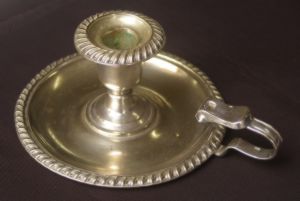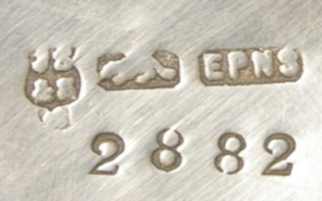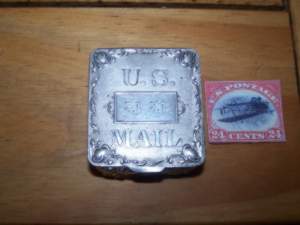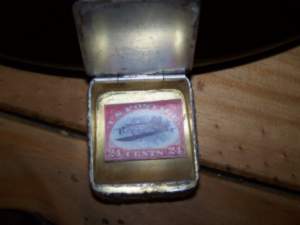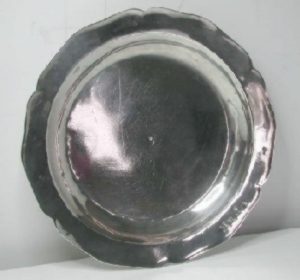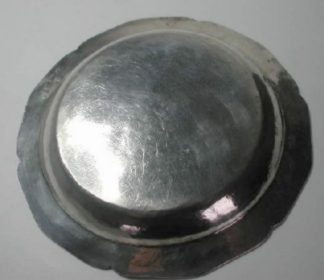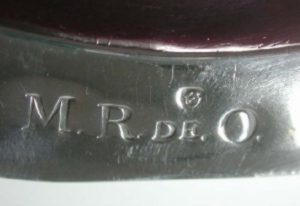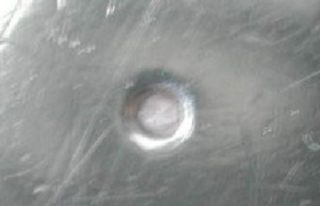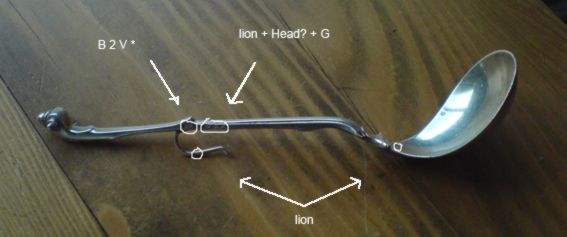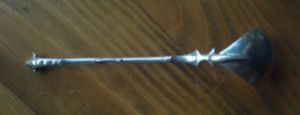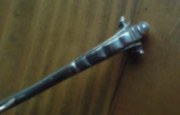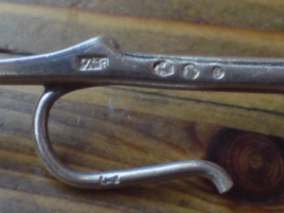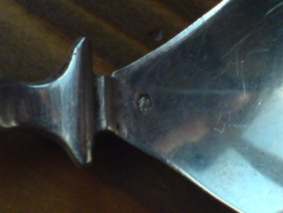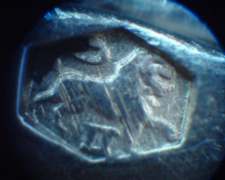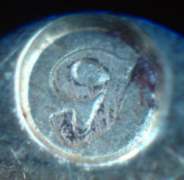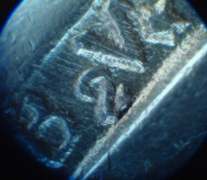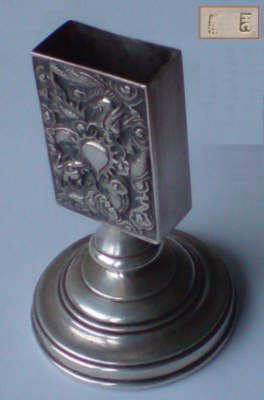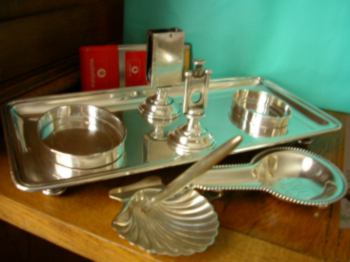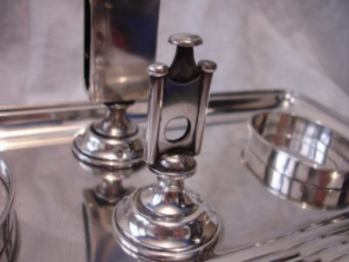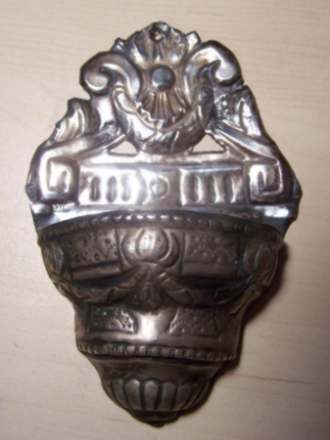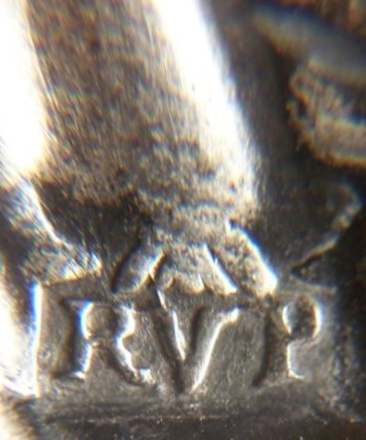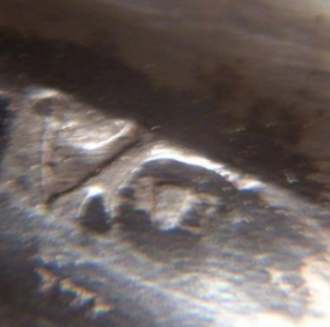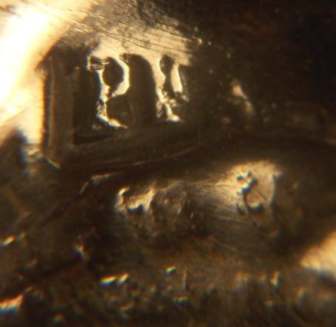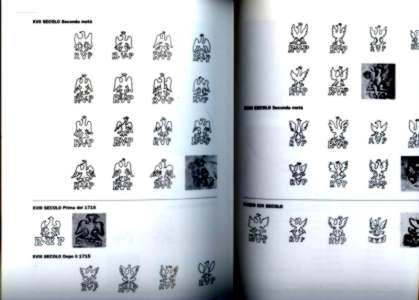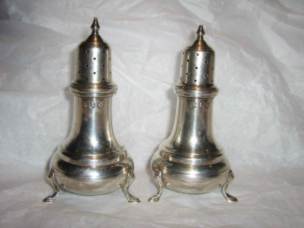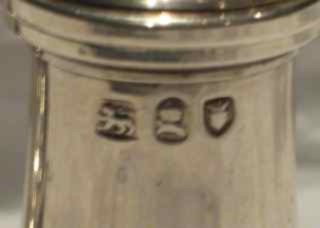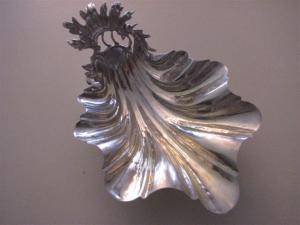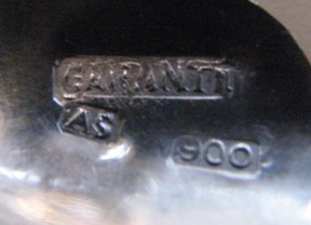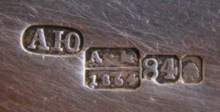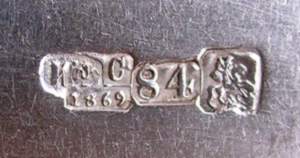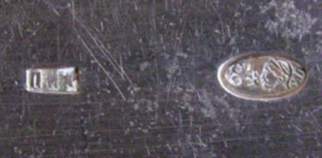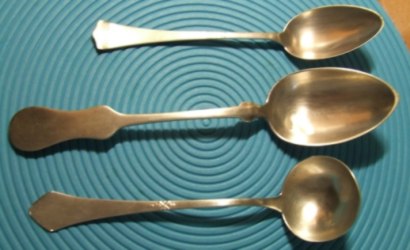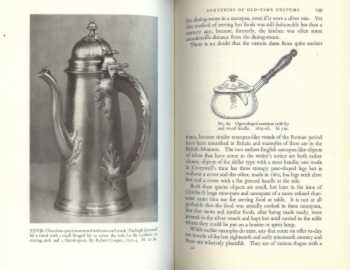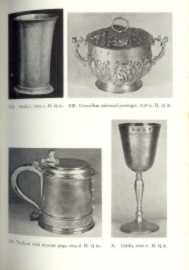 newsletter # 47 - APRIL 2008
newsletter # 47 - APRIL 2008www.ASCASonline.org
email: silverassociation@yahoo.it
YOUR GUIDE TO APRIL NEWSLETTER:
articles new members
members' window
|
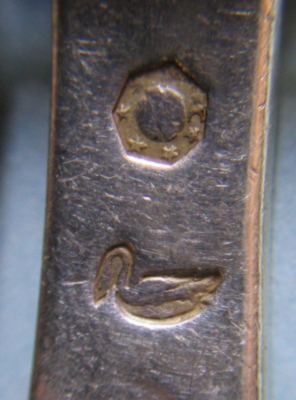
Franco Negrini and Francesca
Rapposelli present: |
New members
Welcome to new ASCAS members:
Robert Clink - USA
Laurie Gaymer - England UK
Washington Luis Pereira de Souza - Brazil
Clauco Pellegrini - Italy
Evelyn Quek - Singapore
Chen Tianyu - China
William Zidane - USA
Members' Window # 47
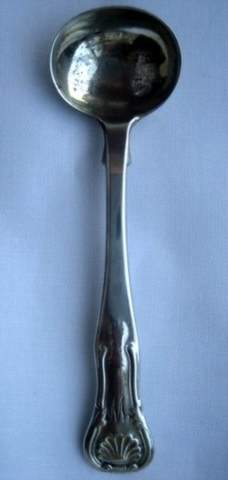
|
Mail to ASCAS: e-mail silverassociation@yahoo.it
John Nicholson writes:
...We have an old family EPNS candle holder. On the base of the
holder are four marks - JS&S in a shield, a beaver, the letters
EPNS, and the number 2882.
We assume this candle holder was made by John Sherwood & Sons,
Birmingham, sometime between 1858 and 1896.
Is there any way of finding out more accurately when this item
was made?
Kind regards
John Nicholson
I found these information about the maker John Sherwood &
Sons:
John Sherwood & Sons of Birmingfham, represented in London by
their agents Hall & Russel at 185 Upper Thames Street and
Queenhite advertised in 1869 as manufacturers of silver and
electroplated goods of every description. George Sherrif
Sherwood and William Sherwood, trading as John Sherwood & Sons,
spoon and fork manufacturers etc. of Litchfield Street ,
Birmingham , dissolved their partnership on 18th October 1879.
J.Sherwood & Sons are subsequently recorded with William
Sherwood, who retired on 31st December 1899, as a partner,
together with Wilfred Sherwood (1899-1909) and George Sherwood
(1901-1909), at Regent Works, Regent Street, Birmingham and 31
Ely Place, Holborn.
I found also the information that a mark with "crown" was in use
1858-1896 and without "crown" was used from 1897.
Giorgio Busetto
Ben Blonquist writes:
...could you tell me what is this item?
Best regards
Ben Blonquist
Your item is a "stamp case".
The silver stamp cases began to be produced toward the end of
19th century using gold, silver and wood. Some of the earliest
British stamp boxes date from the 1880s, when the silver stamp
case came into regular production. In 1888, James Allen of
Birmingham registered a pocket letter scales/stamp holder, which
he made in silver and brass.
Further information about "stamp cases" are available in my
Silver Dictionary at
www.silvercollection.it
Giorgio Busetto
Hymie Dinerstein writes:
...I am attaching details of a 7 1/2" round plate which weighs
268 grams and which I am trying to identify. Apart from two
hallmarks, it has the letter M.R.. and in smaller type, DB. I am
wondering if this salver is from Bermuda as it has the feeling
of Central America/Caribbean.
Can you help please.
Thanks
Hymie Dinerstein
Nikica Vuletic writes:
...I am not fully familiar with Italian hallmarks so I must ask
a question that follows. I bought six small coffee spoons
hallmarked 39PA 800 St (see enclosed scan).
At eBay address enclosed below I found the same hallmark set (second
enclosed picture): http://cgi.ebay.it/CENTROTAVOLA---ARGENTO--800--CON--RICCO-BORDO--Gr.-215_W0QQitemZ270194975803QQcmdZViewItem
Question: Is it legal makers mark since it does not look as
punched (hammered) but engraved or cast at the time the spoon
has been made? ASCAS references for Italian hallmarks does not
show this kind of makers marks. Do you happen to know
manufacturer's name that uses St hallmark?
Best regards
Nikica Vuletic
don't worry. The mark is authentic.
The maker is Stancapiano Eug. - c. Tuckory 113 Palermo.
The factory is still active (at a different address). Some
information is available (in Italian) at
http://www.stancampiano.com/Xstancampiano/Area1/ITA/ITA/Static/Az-Chi.htm
Giorgio Busetto
Nicolas Christol writes:
... I have a question about this odd spoon I bought recently. It
has a hook on the stem and is marked with a lion looking right,
a female head looking left, a letter " G" and another mark that
looks to be B2V.
I'd greatly appreciate to know where and when this spoon was
manufactured and it's use
Nicolas Christol
Your spoon was made in the Netherlands (Pays Bas) in 1818
(date letter "I" in script).
I do not know the exact use of this spoon (but I saw some other
similar spoons).
I hope that ASCAS members will be able to help you.
Giorgio Busetto
Nikica Vuletic writes:
...What is this? Looks like Matchbox holder. Case dimensions
exactly fits commonly used matchboxes. But there are no edge
openings for matchbox striking surface access. I navigate
Internet to see if there are similar "solid " holders but I did
not found any. Additionally holder should have (inside the case)
an extended part that serves to push drawer with matches in
order to open it (instead of someone’s finger).
If it is not a matchbox holder than what it could be: toothpick
holder - should be round, cigarette holder - to hold just few
cigarettes. Without original paper box or probably something
else.
Silver hallmarks are Chinese Hung Chong and design is typically
Chinese - dragoon scenes.
Thanks
Nikica Vuletic
I believe that your item is a matchbox holder. I saw some
other similar pieces and they were always described as matchbox
holders. I have some images of a "smoker's set" bearing Austrian
1867-1922 marks that confirms my hypothesis
Giorgio Busetto
Cheron Frazier writes:
...Hello Giorgio,
I saw your antique silver holy water font on the
silvercollection.it website (editor's note: Cheron refers to
the holy water font illustrated in my private website
www.silvercollection.it ) and it is very similar to one
which I have. I did not know this was an Italian font until I
saw yours. The similarity is unmistakable. The marks on my font
are a bit different. It is difficult to find information here in
California on the old Italian silver marks and I am sorry I do
not understand the Italian language. I am hoping you can look at
the photos I attach here and help identify this holy water font
better through your reference books. The hallmarks are in three
different locations on the front. One of the locations has a
signature or word, although I am afraid my photos did not
capture it very well, I could try again to photograph if needed.
Above the signature are two round stamped marks and above that
are the letters P and another letter I cannot decipher....
.... There are many more hallmarks on this holy water font than
first thought. A lot of them so small that I am amazed that they
could be struck. Today I discovered three small lines that are
interesting, 1st line "LV." (yes the period is there also), 2nd
line looks like some Roman numerals but I can only make out a
few letters on the end of the line, maybe R or C XV, and not the
first letters, 3rd line says "Ad" (yes, capital A and small d),
very clearly struck, but very very small. I believe the
silversmith is V.O, not V.G. That is an eagle over the RUP? I
thought it looked more like a polar bear!...
Cheron Frazier
I'm sorry but I'm unable to identify the maker of your holy
water font. It was made in Palermo (eagle over RUP), possibly by
silversmith V.G (not identified) and the assayer was P???
The eagle mark was in use in 18th century until 1820 c. In my
opinion it was made between the end of the 18th and the
beginning of t he 19th century.
The assayer mark (not readable in you photo) could be PM807
(Paolo Maddalena) or PF13 (Pietro Fenoaltea) or PC14 (Pietro
Calvo) all active at the beginning of the 19th century.
Giorgio Busetto
Ben Staunton writes:
... I have a question for the readers. I picked up this pair of
casters in an Antique shop on a trip to the US. I believe they
would originally have had a third larger caster. The three
hallmarks appear to date them as Georgian from the early
nineteenth century.
Unfortunately they have no makers mark. Is this common? And are
pieces without a makers mark worth a lot less than pieces with
one?
Ben Staunton
Maybe maker's mark and date letter were punched on the third
(missing) caster. Anyway I hope that ASCAS members will
contribute with their suggestions
Giorgio Busetto
Pat McCarthy writes:
... . I recently purchased a pair of this silver shell dishes and have tried to find out some information about their maker,
manufacture and date but have been unable to do so on the internet or the books I have.
Any assistance would be greatly appreciated.
Thank you for your assistance
Pat
Replies to questions
| Gustav Roos
receives this reply about the marks of his Russian
spoons
( see March Newsletter) Willand Ringborg writes: ... Three spoons, and four (?) stamps.
|
| Vadim
Dardik receives another reply about the marks of
his spoons
( see February Newsletter) Pierre Strobbe writes: ... Isidor von Klinkosh stifted in 1797. His
son , freiher Joseph Carl von Klinkosh married a
prinsess von Lichtenstein an d became "fournisseur
de la cour". He was born in Vienna in 1822 and
was actif between 1843 -1884. He worked
temporary with the firm Mayerhofer. This firm
stopped in 1930. The museum in Vienna hes a
tremendous collection of this firm including
pieces in "bronze doré" J.C.K.was his sign, jou
find this mark on every piece in bronze,
silvered or in silver.
|
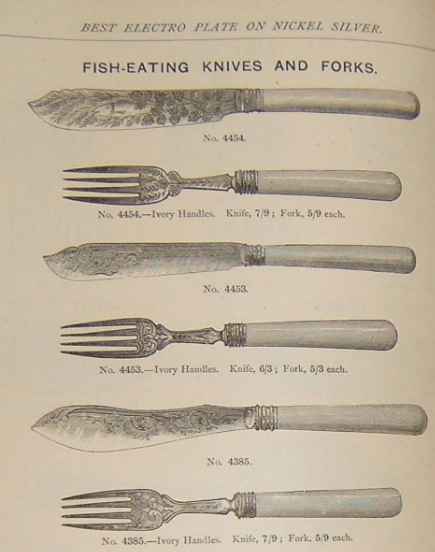
|
This month ASCAS
presents a page from the 1878 catalog (second
edition) of ATKIN BROTHERS, Silversmiths
and silver cutlers, electro platers,
Britannia metal smiths and cutlers,
Sheffield: FISH EATING KNIVERS AND
FORKS more about Atkin Brothers in www.silvercollection.it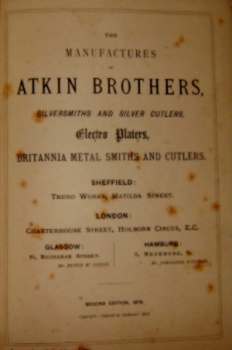
|
"A WORD per MONTH"
In this column we
presents an abstract from a page of the "What is?
Silver Dictionary"
courtesy of
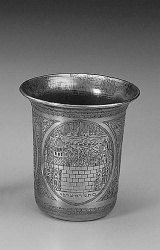
|
KIDDUSH CUP
|
"A BOOK ON MY SHELF"
In this column we
present books, new or ancient, dealing with
silver in all its aspects (history, marks,
oddities...). This isn't a "book review" but
only a fair presentation of some useful "tools"
that anyone may have in the shelf of his
bookcase.
ASCAS members are invited to contribute to this
column
(click to enlarge images)
"A BOOK ON MY SHELF"
In this column we
present books, new or ancient, dealing with
silver in all its aspects (history, marks,
oddities...). This isn't a "book review" but
only a fair presentation of some useful "tools"
that anyone may have in the shelf of his
bookcase.
ASCAS members are invited to contribute to this
column
(click to enlarge images)
The "book on the shelf" of this month is
presented by Karin Sixl-Daniell:
OLD SILVER FOR MODERN SETTINGS
by Edward Wenham
Alfred A. Knopf, New York, 1951
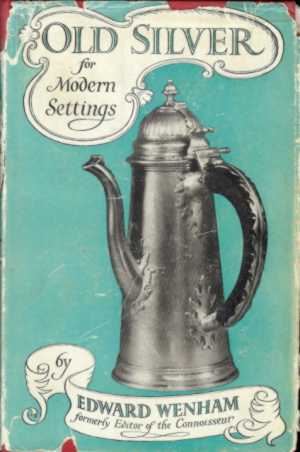 |
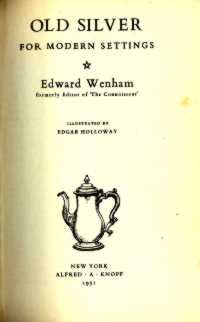 |
Closing our APRIL 2008 edition of ASCAS Newsletter I hope you have appreciated its content.
Your comments, suggestions and advice will be of great help.
My thanks to Ben Blonquist, Nicolas Christol, Hymie Dinerstein, Jayne Dye, Cheron Frazier, Robert Massart, Franco Negrini, John Nicholson, Francesca Rapposelli, Willand Ringborg, Ben Staunton, Pierre Strobbe, Nikica Vuletic, JoAnne Wilkinson for their invaluable contributions.
Giorgio Busetto
Secretary
ASCAS is a community of people
having a common interest in antique
silver.
|
|
|

